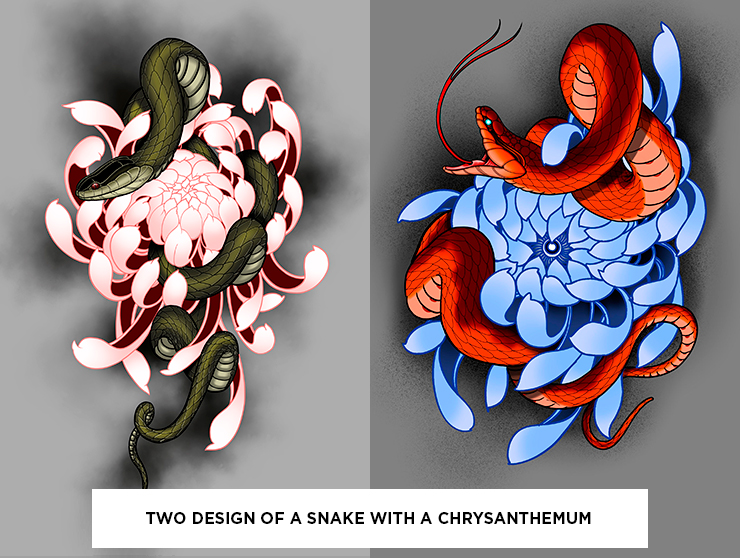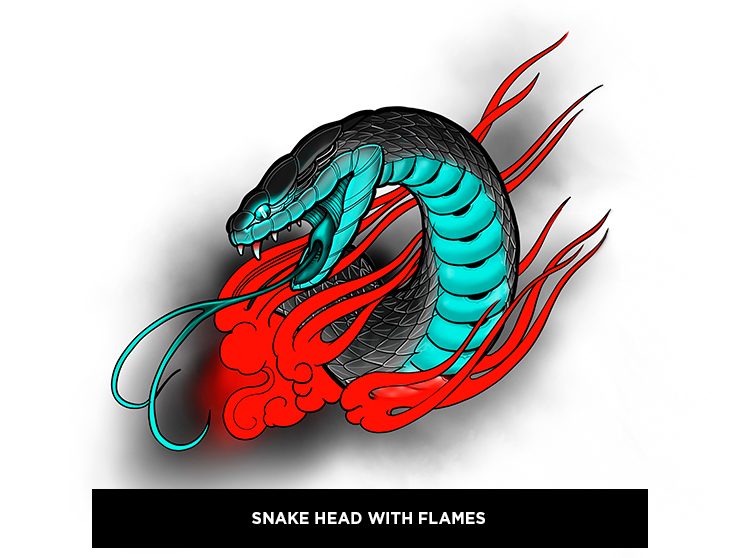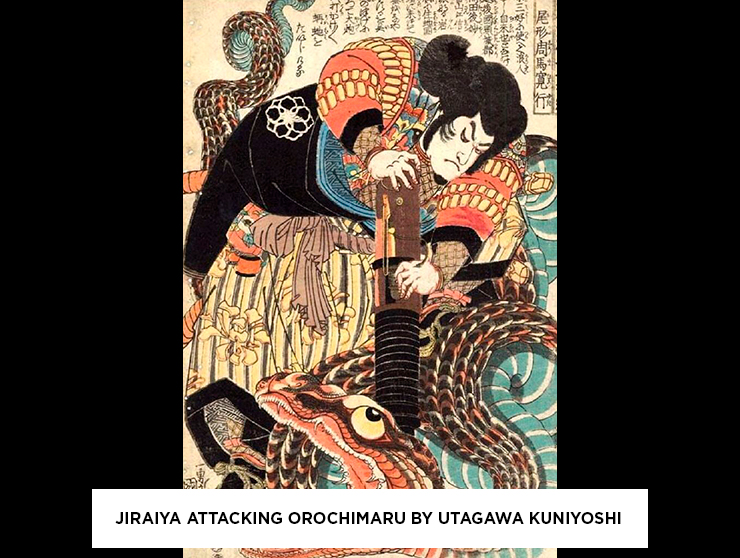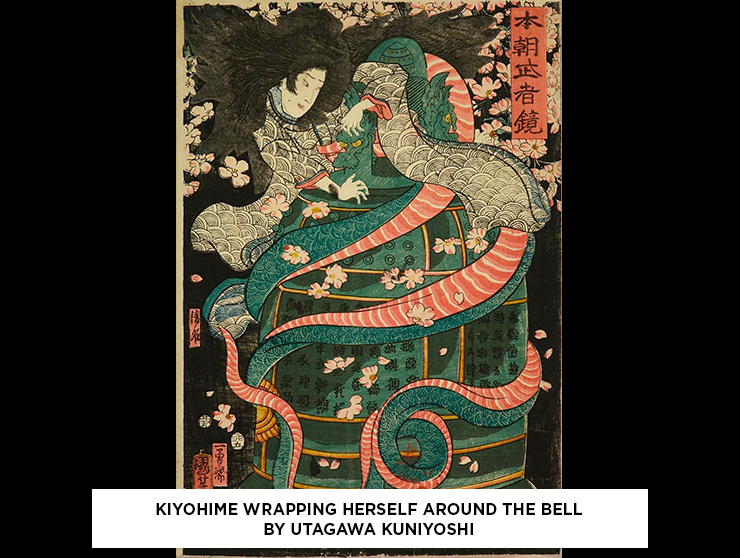Snake – hebi 蛇
In western mythology, the snake has a rather negative connotation. Simply think of the Bible when the snake betrays Eve and tells her to eats the apple. In eastern mythology, it is the opposite as the snake is often considered as a messenger from the Gods as well as being a symbol of protection and luck.
As mentioned in the blog on dragons, it is only recently that Japanese people started to differentiating snakes from dragons. In ancient times, it used to be the same animal to them. This is why there are multiple stories which reference dragon, that have been translated into snake and vice versa. The sight of a snake was a rare and special moment, because for them, it was the same as seeing a dragon! The rarest snake is the white snake (shirohebi). Many Shintoists temples are dedicated to this messenger of the Gods.
Traditionally, the snake is often represented with patterns recalling spring, summer or autumn. This is because snakes hibernate, therefore they are not paired with winter element. They are seen most often paired with flowers such as sakuras or peonies to reminisce the moment they come out of their burrow. We can also see it paired with maple leafs (momiji).
Symbolism
The snake is a very powerful spirit animal and has the same features of wisdom and protection as a dragon. It protects against sickness, disasters and misfortune.
Because of its ability to moult, it is associated to eternal life. Today, it is a symbol of change and regeneration.
The snake is considered as a luck symbol. The farmers venerated them and considered them as a lucky charm when they lived under their houses.
Known stories about snakes
One of the most renown ninjas in this story is Orochimaru: In the traditional tale Jiraiya Gōketsu Monogatari, Orochimaru gets bewitched by a snake. He receives magical powers allowing him to morph himself into a giant snake to kill his enemy, Jiraiya.
Another well known story about snake is the one of Kiyohime.
The beautiful Kiyohime fell in love with Anchin, a monk that visits her village ever since she was a kid. Anchin had fun promising the girl he would marry her as soon as she would be old enough. In reality, the monk was a womanizer who takes advantage of a girl's naivety. On her birthday, the monk finally admitted it was just a joke and that he wasn't going to marry her. Kiyohime becomes mad with rage and starts chasing him. She ends up catching up to him by the Hidaka river, but Anchin gets on a boat and flees. Kiyohime tries to swim through the river. Her anger is so intense, during the crossing of the river she suddenly transforms into a giant snake with the face of a hannya (demon). As soon as Anchin sees that she has transformed, he goes off to hide in a temple. He tries to seek help from the priests. The priest decides to hide Anchin under the bell of the temple. However, Kiyohime the snake, smells him and rolls up around the bell. She starts spitting fire until the bell made of bronze melts. Kiyohime then kills the monk she loved so much and disappeared in the flames as well.
Snakes are still misunderstood. One must not be scared of them, because they are very generous animals. Their beauty and symbolism can easily be translated in a wonderful Japanese style tattoo.





